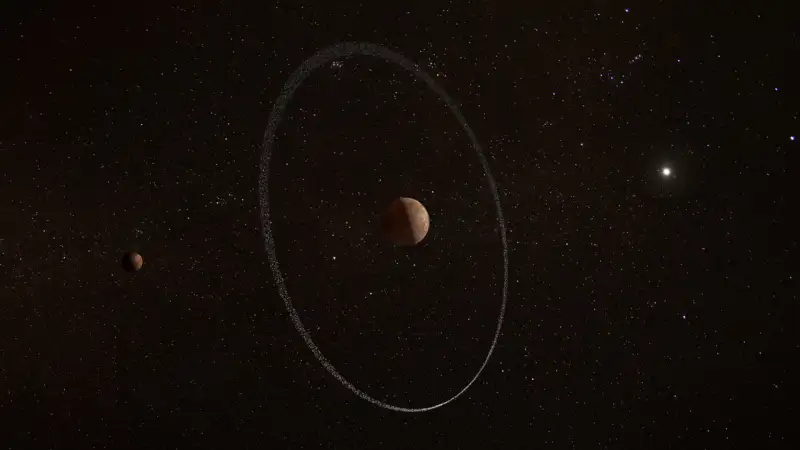Scientists have discovered a new ring system around a dwarf planet on the outskirts of the solar system. The ring system orbits much further out than is typical for other ring systems, arising certain questions regarding current theories of how ring systems formed.
The ring system revolves around Quaoar, a dwarf planet about half the size of Pluto that orbits the sun beyond Neptune.
The discovery, published in Nature, was made by an international team of astronomers using HiPERCAM—an extremely sensitive high-speed camera developed by scientists at the University of Sheffield that is mounted on the world’s largest optical telescope, the 10.4 metre diameter Gran Telescopio Canarias (GTC) on La Palma.
Related: NASA’s Webb Telescope Almost Set To Explore The Solar System
The rings are too small and faint to be seen directly in an image. Instead, the researchers made their discovery by observing an occultation, which occurs when the light from a background star is blocked by Quaoar as it orbits the sun. The event lasted less than a minute, but it was unexpectedly preceded and followed by two dips in light, indicating a ring system around Quaoar.
Ring systems are relatively uncommon in the solar system. Only Chariklo and Haumea have rings, in addition to the well-known rings around the giant planets Saturn, Jupiter, Uranus, and Neptune. All of the previously known ring systems are able to survive because they orbit close to the parent body, preventing ring material from accreting and forming moons by means of tidal forces.
The ring system around Quaoar is notable because it is located at a distance of more than seven planetary radii—twice as far out as what was previously thought to be the maximum radius according to the so-called “Roche limit,” which is the outer limit of where ring systems were thought to be capable of surviving. In comparison, the main rings of Saturn are contained within three planetary radii. As a result of this discovery, theories of ring formation have had to be reconsidered.
The ring system around Quaoar is notable because it is located at a distance of more than seven planetary radii—twice as far as what was previously thought to be the maximum radius according to the so-called “Roche limit,” which is the outer limit of where ring systems were thought to be able to survive. In contrast, Saturn’s main rings are located within three planetary radii. As a result of this discovery, theories of ring formation must be reconsidered.

“It was unexpected to discover this new ring system in our solar system, and it was doubly unexpected to find the rings so far out from Quaoar, challenging our previous notions of how such rings form,” said Professor Vik Dhillon of the University of Sheffield’s Department of Physics and Astronomy. Because the event lasted less than one minute and the rings are too small and faint to see in a direct image, the use of our high-speed camera, HiPERCAM, was critical to this discovery.
“Everyone learns about Saturn’s magnificent rings as a child, so hopefully this new discovery will shed more light on how they came to be.”
The study, led by the Federal University of Rio de Janeiro in Brazil, included 59 academics from around the world.
